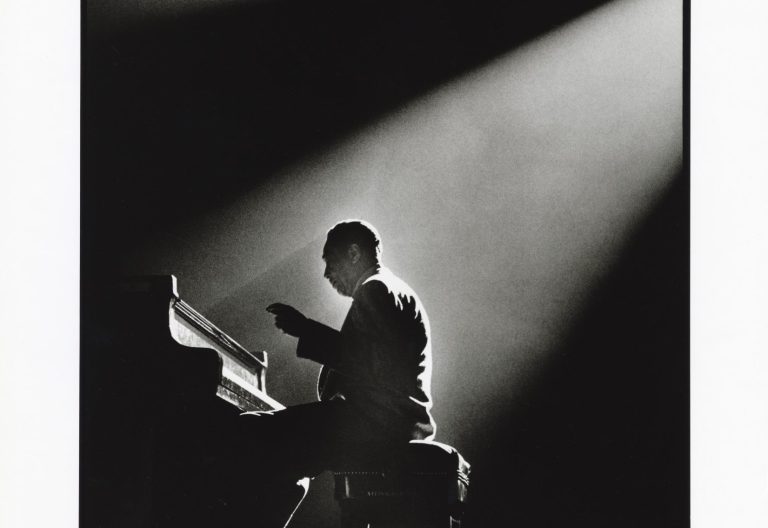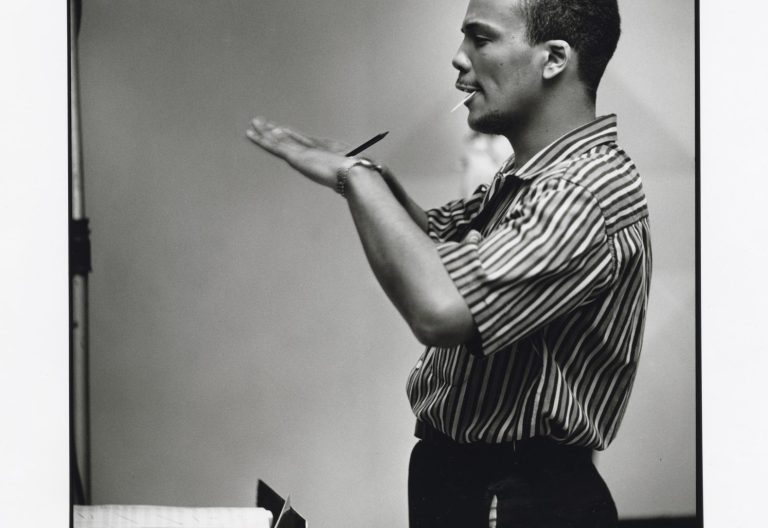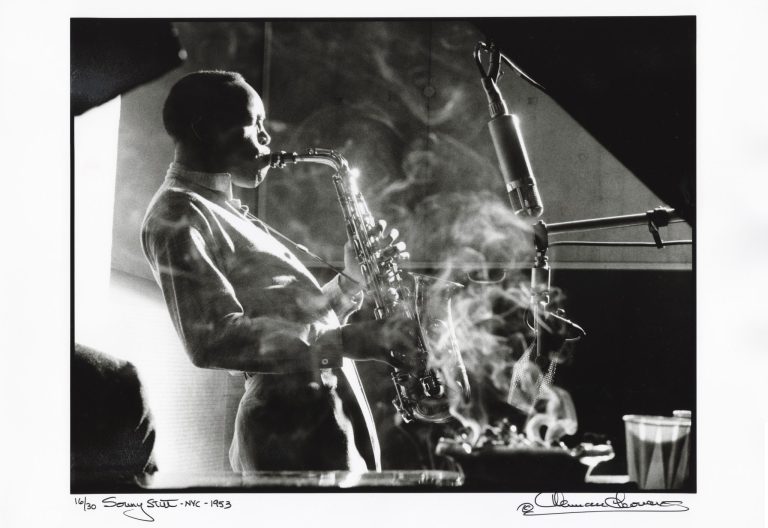Ogden Museum of Southern Art
925 Camp St
New Orleans, LA 70130
504.539.9600 | HOURS
925 Camp St
New Orleans, LA 70130
504.539.9600 | HOURS

Herman Leonard, Louis Armstrong, Paris, 1960, Printed 1998, Selenium-toned silver print, 16 x 20 inches, Gift of Stacey and Michael Burke, 2023.32.21
Herman Leonard is widely considered the most important photographer of Jazz musicians after World War II. Born in 1923 in Allentown, Pennsylvania, Leonard lived and worked in Ottawa, New York City, Paris and Ibiza before he moved to New Orleans in 1991. The fifteen years he lived in New Orleans (ending with the loss of his home and studio to the floodwaters of Hurricane Katrina) was a period of particular significance to his career – a time of critical recognition and growing fame, with several exhibitions of his work at A Gallery for Fine Photography in the French Quarter and the printing of this important portfolio of 30 photographs. His time in New Orleans culminated in a major retrospective exhibition and corresponding book publication titled Jazz, Giants and Journeys: The Photography of Herman Leonard in 2006, organized by Ogden Museum of Southern Art.
As a child in Pennsylvania, Leonard received his first Kodak Brownie camera at age 11, a moment that would define the trajectory of his life. At the University of Ohio, Leonard studied photography before serving in WWII, returning to earn his degree after the war in 1947. After an apprenticeship with renowned photographer Yousef Karsh in Ottowa, Herman Leonard opened his first studio in Greenwich Village in 1948. There, he photographed most of the major figures of the emerging Bebop and Cool Jazz movements. Many of these icons became his close friends. Leonard’s atmospheric photographs of musicians playing their signature instruments came to represent one of the most significant bodies of work that documents this era in the history of American Jazz.
In the late 1950s Leonard left New York for Paris, where he photographed fashion, celebrities and worked in advertising both as a freelance photographer and the European representative of Playboy Magazine. After decades in Paris, Leonard relocated his family to the island of Ibiza and began reevaluating his body of work in photography. In 1985, he published his first major book, “The Eye of Jazz.” His work was rediscovered with the unexpected success of an exhibition of his classic Jazz photos in London in 1988.
Energized by his newfound recognition, Leonard returned to the United States in 1989, living briefly in San Francisco before settling in New Orleans in 1991. In New Orleans, he quickly acclimated to the cultural, artistic and musical rhythms of the city. His camera eagerly captured not only the local musical giants like Trombone Shorty and Lenny Kravitz, but also the street musicians, Jazz clubs, Black Masking Indians, Jazz Fest and other cultural events around the city. He published his second book, “Jazz Memories,” in 1995, and his accolades and critical recognition continued to grow over the next decade.
In 1998, Leonard self-published this portfolio of thirty photographs in New Orleans. Hand-picked by Leonard to represent the best examples of his photographic practice, each selenium-toned silver print measures 16 ¼ x 12 ½ inches. Each print includes Leonard’s signature, title, negative date and edition notation in ink. Thirty editions were produced, each divided into three volumes of ten photos with the corresponding colophon included loose in elephant folio-sized black silk-covered clamshell boxes. The three volumes are housed in a matching slipcase. This edition (16 of 30) was generously gifted to Ogden Museum of Southern Art by Stacey and Michael Burke in 2023.
In 2005, Herman Leonard was working with Ogden Museum of Southern Art on a major retrospective exhibition and publication when Hurricane Katrina began heading toward the city in August. The Museum agreed to store Leonard’s massive negative archive, saving it from the storm’s destruction and the flooding after the levees failed. The flooding destroyed Leonard’s home and studio in Lakeview, including his massive photography archive. Work on the exhibition and book at Ogden Museum resumed after the Museum reopened in October, culminating in a book and exhibition in 2006, both titled Jazz, Giants and Journeys: The Photography of Herman Leonard.
In the wake of the storm, Leonard settled in Los Angeles. In the years that followed, he focused on his archives and legacy, publishing additional books and working with museums, galleries and major collectors to preserve his work for future generations. A film documenting his post-Katrina experience, his reflections on New Orleans and his efforts to preserve his work, Saving Jazz, was produced by the British Broadcasting Corporation (BBC) in 2006. Herman Leonard died in Los Angeles on August 12, 2010.




Ogden Museum of Southern Art is dedicated to presenting and preserving the art of the American South. Exhibitions like this are made possible through the generosity of supporters.